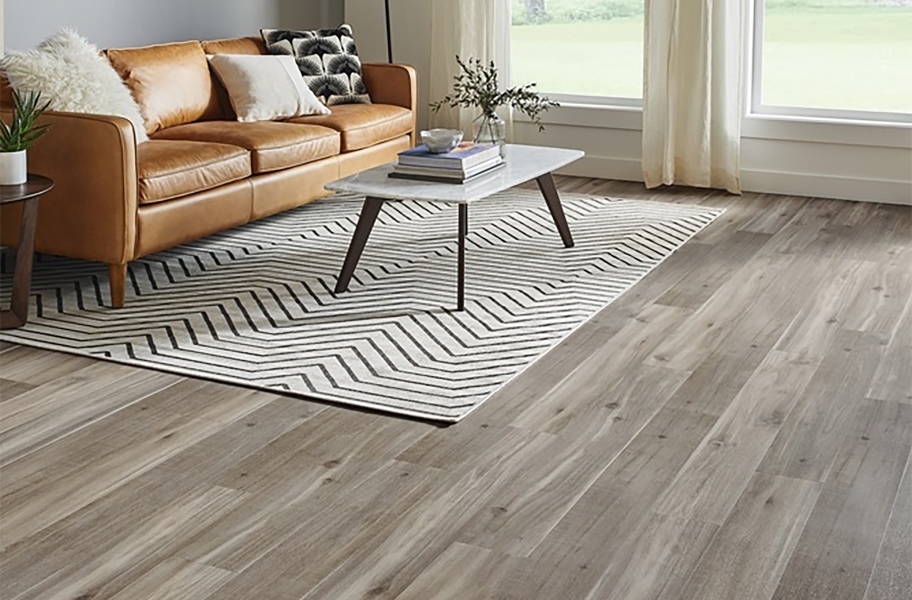Vinyl flooring has emerged as one of the most popular choices for homeowners and commercial spaces alike. With its versatility, affordability, and durability, it’s no wonder that vinyl is revolutionizing the flooring industry. In this Vinyl Flooring Dubai comprehensive guide, we’ll explore everything you need to know about vinyl flooring—from its types and benefits to installation and maintenance.
What is Vinyl Flooring
Vinyl flooring is a synthetic flooring material made from polyvinyl chloride (PVC) resin and other compounds to enhance durability and flexibility. Available in sheets, tiles, or planks, it mimics the appearance of natural materials like wood, stone, or ceramic while offering a cost-effective alternative.
Types of Vinyl Flooring
Vinyl Sheet Flooring: Sold in large rolls, this type provides a seamless look and is ideal for areas prone to moisture, such as bathrooms and kitchens.
Vinyl Tile Flooring: These square tiles replicate the appearance of ceramic or stone tiles. They are easier to install and replace individually if damaged.
Luxury Vinyl Plank (LVP): Mimicking the appearance of hardwood floors, LVP offers a realistic texture and high-end aesthetic.
Luxury Vinyl Tile (LVT): Similar to LVP but designed to resemble natural stone or ceramic, LVT combines beauty with practicality.
Benefits of Vinyl Flooring
Durability: Vinyl flooring is highly resistant to wear and tear, making it an excellent choice for high-traffic areas. It can withstand heavy foot traffic, scratches, and spills.
Water Resistance: One of the standout features of vinyl flooring is its water-resistant nature, making it perfect for moisture-prone areas like bathrooms, kitchens, and basements.
Affordability: Vinyl flooring offers an economical solution without compromising on style or quality. It is significantly cheaper than hardwood or natural stone.
Ease of Maintenance: Vinyl floors are easy to clean and maintain. Regular sweeping and occasional mopping keep them looking pristine.
Wide Range of Styles: Available in various designs, colors, and textures, vinyl flooring can complement any interior decor style, from rustic to modern.
Comfort Underfoot: Vinyl has a softer surface than materials like stone or ceramic, providing comfort underfoot and reducing noise levels.
Quick Installation: With options like peel-and-stick tiles or click-and-lock planks, vinyl flooring can be installed with minimal effort, even by DIY enthusiasts.
Choosing the Right Vinyl Flooring
When selecting vinyl flooring, consider the following factors:
Location: Determine where the flooring will be installed. For moisture-prone areas, opt for water-resistant or waterproof vinyl.
Traffic Levels: High-traffic areas may require thicker vinyl with a wear layer for added durability.
Style Preferences: Choose a design that complements your interior decor. Consider whether you prefer the look of wood, stone, or a unique pattern.
Budget: While vinyl is cost-effective, luxury options like LVP and LVT may cost more than standard vinyl sheet flooring.
Installation Process
Installing vinyl flooring can be a DIY project or handled by professionals. Here’s a basic overview of the installation process:
Preparation:
Ensure the subfloor is clean, dry, and level.
Remove any existing flooring if necessary.
Measurement and Cutting:
Measure the area accurately and cut the vinyl sheet, tiles, or planks to fit.
Leave a slight expansion gap along the edges.
Adhesive Application:
Depending on the vinyl type, use adhesive or a peel-and-stick method to secure the flooring.
Placement:
Lay the vinyl pieces carefully, ensuring proper alignment and eliminating air bubbles.
Finishing Touches:
Trim any excess material and install baseboards or molding for a polished look.
Maintenance Tips
To ensure your vinyl flooring stays in excellent condition, follow these maintenance tips:
Regular Cleaning:
Sweep or vacuum daily to remove dirt and debris.
Mop with a damp cloth and a mild detergent for deeper cleaning.
Avoid Harsh Chemicals:
Use cleaning products specifically designed for vinyl flooring to avoid damage.
Protect from Furniture:
Use felt pads under furniture legs to prevent scratches.
Handle Spills Promptly:
Wipe up spills immediately to prevent staining.
Avoid Dragging Heavy Items:
Lift heavy furniture instead of dragging it across the floor.
Eco-Friendly Options
Many manufacturers now offer eco-friendly vinyl flooring made from recycled materials and free from harmful chemicals. These options are both sustainable and safe for indoor air quality.
Conclusion
Vinyl flooring is a practical, stylish, and affordable option that suits a wide range of needs and preferences. Whether you’re renovating Flooring Dubai a home or outfitting a commercial space, vinyl flooring provides the perfect balance of aesthetics and functionality. With proper care and maintenance, it’s an investment that will serve you well for years to come.



